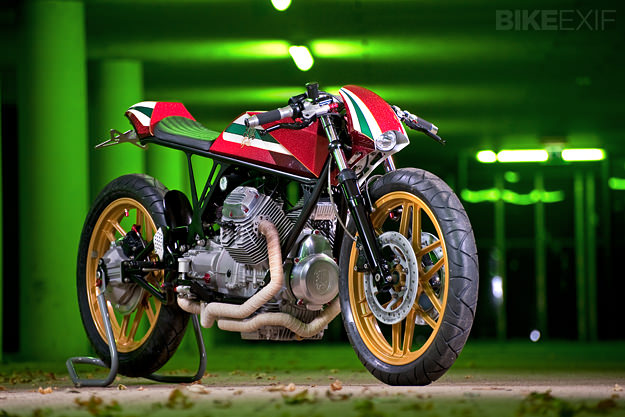
Austin Vince Custom Vintage Overalls!
Custom made by the man himself! Vintage overalls in the colours of your choice. I'm thinking blue with red and white stripes...
~$400Cdn

Bell Bullitt Retro-modern Helmet
If you've seen Rush then you know the look, and this modern remake of the classic Bell helmet catches it.
$432

100mph t-shirt 'ton-tee'
Triumph looking logo but advertising the ton instead of a specific company... nice!
$30

Vintage Race Fairing
I might be doing this a bit backwards, but I love old race faired bikes. A 1970s Honda CB750 would get turned into a race replica and make an ideal vintage racing machine. It all starts with a fairing!
~$200 (fairing)

Spartan Leather Vintage Race Suit
A tailored suit with race quality materials and armour. As they say, less 'Ricky Racer' than your typical TRON styled current racing suits.
$950+$260 in armour upgrades
I'm enjoying my current Kawi garage a great deal. Fixing up the Concours and riding the Ninja is a good time, but I suppose we're all rooted in the aesthetics of our youth. As a child growing up in rural England watching the height of the British motorcycle industry roll by in the early nineteen seventies, I tend to return to that look and the associated nostalgia.











































